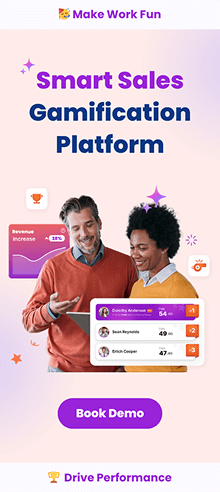In the hyper-competitive landscape of modern sales, having a talented sales team is essential, but it’s not enough. To truly unleash their potential and drive revenue growth, you need to equip them with the right tools and resources. Enter sales enablement content – the dynamic arsenal that can transform your sales efforts from ordinary to extraordinary. To achieve this, it’s crucial to create sales enablement content that targets pain points, uses templates for standardization, and aligns sales and marketing teams for effective content creation.
What is Sales Enablement Content, Exactly?

Sales enablement content is any resource designed to support your sales team at every stage of the sales cycle. This includes both internal sales enablement content, which empowers sales teams with resources like sales onboarding, training, and sales playbooks, and external sales enablement content, aimed at increasing sales performance and customer engagement through assets like product demos and case studies. It’s the fuel that keeps the engine running smoothly. Think of it as a toolkit filled with information, tools, and guidance that empowers your reps to engage prospects, build relationships, and close deals with confidence. This toolkit includes everything from detailed product information sheets and competitive battle cards to visually engaging sales collateral like brochures, presentations, and demo videos. It provides sales playbooks and scripts that offer step-by-step guidance for navigating different sales scenarios, as well as training materials to keep your team’s skills sharp. Even customer-facing content like blog posts, webinars, and social media updates play a role in attracting and nurturing leads, making them a valuable part of your sales enablement strategy.
Why Should You Invest in Sales Enablement Content?
The benefits of a robust sales enablement content strategy are undeniable. First and foremost, it empowers your sales reps. By providing them with the necessary sales enablement materials, such as resources, tools, and content, they need to understand your products, address customer concerns, and position your offerings against competitors, you’re giving them the confidence to excel in their roles. This confidence translates to more effective sales conversations, stronger relationships with prospects, and ultimately, higher close rates.
Sales enablement content also plays a crucial role in shortening sales cycles. When reps have instant access to relevant information, they can respond to customer questions and objections more quickly and efficiently. This agility allows them to move deals forward faster, reducing the time prospects spend in the pipeline and increasing your overall sales velocity.
In addition to empowering reps and shortening sales cycles, sales enablement content can significantly boost your team’s productivity. By providing them with streamlined processes and readily available materials, you eliminate the time-consuming task of searching for information. This frees up your reps to focus on what they do best: building relationships and closing deals. The result is a more efficient and effective sales team that can consistently deliver results.
Perhaps the most compelling reason to invest in sales enablement content is its ability to improve your win rates. When your reps are armed with the right content, they can tailor their approach to each prospect’s specific needs and pain points. This personalization resonates with buyers and positions your offerings as the solution to their problems, increasing the likelihood of a successful outcome.
Sales enablement content also plays a critical role in ensuring consistency and alignment across your sales team. By providing a centralized repository of approved materials and messaging, you ensure that everyone is on the same page, delivering a unified brand message and customer experience. This consistency builds trust with prospects and strengthens your brand reputation.
Finally, sales enablement content offers valuable data-driven insights. By tracking how your content is used, which pieces resonate most with prospects, and which ones lead to conversions, you can identify areas for improvement and optimize your strategy over time. This data-driven approach ensures that your content is always evolving to meet the changing needs of your customers and your sales team.
Building a Winning Sales Enablement Content Strategy

Creating an effective sales enablement content strategy requires a thoughtful and systematic approach. It begins with a deep understanding of your sales team’s needs. Collaborate with your marketing team to conduct interviews, surveys, and ride-alongs to uncover their pain points, challenges, and information gaps. What content are they missing? What questions do they struggle to answer? What would make their lives easier and their interactions with prospects more successful?
Next, identify your target audience. Develop detailed buyer personas that describe your ideal customers. What are their demographics, goals, challenges, and motivations? What information do they need at each stage of the buyer’s journey? Marketing teams play a crucial role in creating various types of content, such as product demos, case studies, white papers, and eBooks. By understanding your audience, you can tailor your content to their specific needs and interests, making it more relevant and engaging.
Once you have a clear picture of your team’s needs and your target audience, it’s time to map your content to the buyer’s journey. This involves creating content that addresses each stage of the buying process, from awareness to consideration to decision. For example, awareness-stage content might include blog posts and social media updates that introduce your brand and its offerings. Consideration-stage content could be more in-depth, like whitepapers and case studies that demonstrate your value proposition. Decision-stage content might focus on product demos, competitive comparisons, and customer testimonials that help prospects make an informed choice.
Variety is key when it comes to sales enablement content. Cater to different learning styles and preferences by offering a mix of text, visuals, audio, and video formats. Some reps might prefer concise product summaries, while others might find detailed case studies more informative. By providing a diverse range of content types, you ensure that your team has the tools they need to connect with prospects on their own terms.
Accessibility is crucial for the success of your sales enablement strategy. Make sure your content is easy to find and access by organizing it in a centralized repository or sales enablement platform. This eliminates the frustration of searching for information and empowers reps to quickly find the materials they need in the heat of a sales conversation.
Finally, don’t forget to measure and optimize your strategy. Track engagement metrics like views, downloads, and shares to gauge the effectiveness of your content. Analyze sales outcomes to determine which pieces of content contribute most to closing deals. Use this data to identify top-performing content and areas for improvement. Regularly update your content to ensure it remains relevant and accurate, and be willing to experiment with new formats and approaches to keep your strategy fresh. Alignment and collaboration between sales and marketing teams are essential to create, manage, and optimize content that supports the sales process.
Essential Types of Sales Enablement Content
- Sales Playbooks: Provide step-by-step guidance for each stage of the sales process, from initial outreach to closing. Include best practices, scripts, and strategies for overcoming objections.
- Competitive Battle Cards: Equip your team with concise summaries of competitors’ strengths, weaknesses, pricing, and target markets. These cards help reps differentiate your offerings and address competitive threats.
- Customer Case Studies: Showcase real-world examples of how your product or service has helped other customers achieve their goals. Highlight quantifiable results and specific benefits to demonstrate your value proposition.
- Product Demos and Videos: Offer engaging visuals that bring your product to life. Demonstrate its features, benefits, and use cases in a way that’s easy for prospects to understand.
- Sales Scripts, Email Templates, and Sales Content: Provide your team with proven messaging and talking points for various scenarios. This ensures consistency in your communication and saves reps time in crafting their own messages. Sales scripts are essential in guiding sales reps during conversations with prospects, helping them sound natural and personalized.
- Buyer Personas and Ideal Customer Profiles: Help your team understand your target audience on a deeper level. Outline demographics, pain points, goals, and motivations to guide their sales conversations.
- Pricing and Proposal Templates: Streamline the creation of proposals and quotes with customizable templates. This ensures accuracy and consistency in your pricing and terms.
- Sales Training Materials: Offer ongoing training and development opportunities to keep your team’s skills sharp. Provide resources on sales techniques, product knowledge, and industry trends.
The Future of Sales Enablement Content
The future of sales enablement content is bright, with technology playing an increasingly important role. A dedicated sales enablement team is crucial in creating and managing targeted, customizable external sales enablement content for sales reps to use with leads. Artificial intelligence (AI) and machine learning are being used to personalize content recommendations, automate content creation, and provide real-time insights into buyer behavior. This allows for a more targeted and effective approach to sales enablement, helping your team deliver the right content at the right time to maximize impact.
In conclusion, sales enablement content is the fuel that powers your sales success. It’s the information, tools, and guidance that empower your sales team to engage prospects, build relationships, and close deals with confidence. By investing in a comprehensive sales enablement content strategy, you can drive revenue growth, increase win rates, and build a stronger, more effective sales team.



